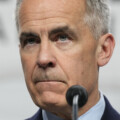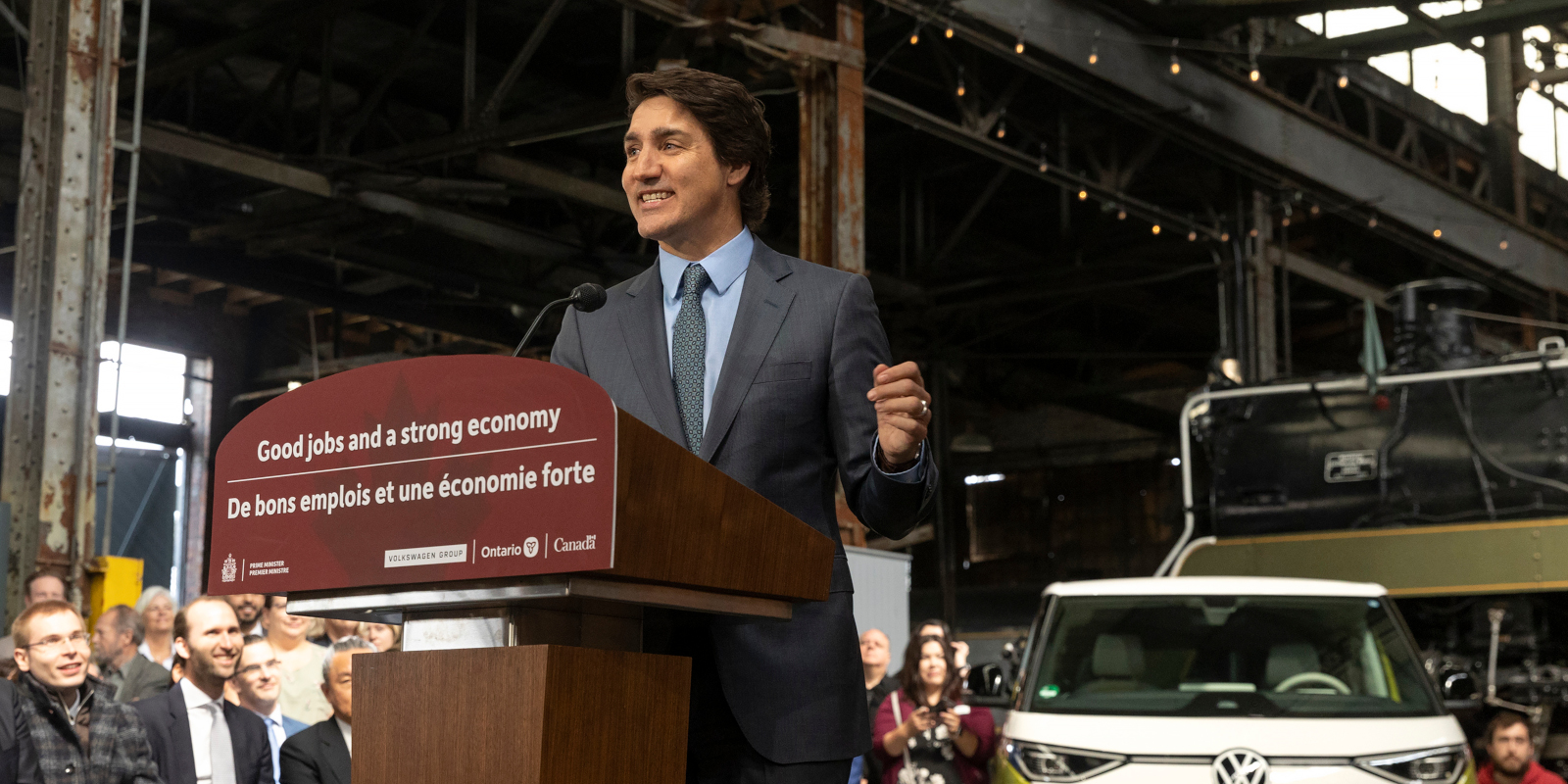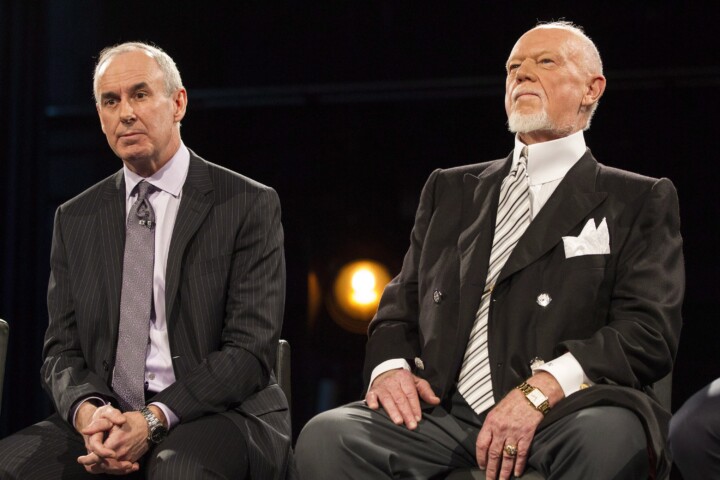Today the Canadian and Ontario governments jointly announced an additional $5 billion in public subsidies for electric vehicle (EV) manufacturing, this time unveiling Honda’s plans to build four new manufacturing plants in Ontario.
The news was met with praise by politicians and some industry voices. It was also met with criticism, from those who are deeply skeptical of the now more than $57 billion in government subsidies and tax credits offered to EV manufacturers in just the last two years.
“This is a historic day with the largest auto investment in Canada’s history,” said Prime Minister Justin Trudeau, standing alongside Ontario Premier Doug Ford and diplomats.
The four manufacturing plants will be constructed at Honda’s existing complex in Alliston, Ont. They will include two battery component plants, a stand-alone battery manufacturing plant, and Honda’s first EV assembly plant. More details on construction will be given by Honda this fall. The company predicts that factory doors will open in 2028.
The proposed facilities will rely on a $15 billion investment from Japanese company Honda, $2.5 billion in federal support through the proposed EV Supply Chain and Clean Technology Manufacturing investment tax credits, and $2.5 billion in direct and indirect funding from the province of Ontario.
“This deal is another example of our two governments working together to rebuild our economy,” said Ontario Premier Doug Ford.
Ford said that Honda plans would help to realize a start-to-finish EV supply chain, starting with the mining of critical minerals like lithium and nickel below the Ring of Fire located in northern Ontario, and ending at EV vehicle assembly plants in southern Ontario.
Last March, Ontario’s Ministry of Mines announced that an agreement was signed with Marten Falls and Webequie First Nation to develop road and community infrastructure to support the Ring of Fire mineral extraction and the livelihood of residents. However, these projects have historically been plagued by delays.

According to Honda CEO Toshihiro Mibe, his company chose Canada as the site for their first EV assembly plant because of this country’s natural resources, skilled workforce, U.S. market access, and environmental policies.
Through their decision, Toshihiro said Honda can “help advance the economy and society of Canada.”
Despite an announcement last week that EV automaker Tesla would be shedding more than 14,000 jobs due to dropping sales, Bloomberg is predicting the electric vehicle market will increase by 22 percent this year.
Critics, however, say that billions of EV subsidies serve to increase the growing deficits at both levels of government and is a risky and ultimately harmful use of Canadian tax dollars.
“We have the federal government giving a $2.5 billion tax credit to a massive international Fortune 500 company, Honda,” Jay Goldberg, Ontario Director of the Canadian Taxpayers Federation, told The Hub. “They’re punishing everyday Canadians by asking the middle class to pay for it.”
The Hub has calculated that the federal government and the provincial governments of Ontario and Quebec have publicly offered more than $40.59 billion in subsidies and tax credits for EV manufacturers in the past two years. This represents 15 percent more than the companies themselves have put forward for their investments in Canada’s EV sector.
Using numbers from the Parliamentary Budget Officer, it is estimated that the three major EV manufacturing projects in these two provinces—Volkswagen (headquartered in Germany), Stellantis-LGES (headquartered in the Netherlands and South Korea), and Northvolt (headquartered in Sweden)—will actually cost Canadian government as much as $50.7 billion after accounting for the cost of public borrowing to finance the massive public subsidies and forgone corporate tax revenues from the tax abatements.
According to the federal government, Honda’s Alliston project will create 1,000 permanent manufacturing jobs. However, during media availability following the announcement, neither Trudeau or Ford would put a price on how much the government paid, through their investments, for each of those jobs.
“You have two choices: you don’t invest, or you have confidence in the people of Ontario and companies like Honda to create jobs,” responded Ford. “If you’re asking me a number, how can you put a price on 28,000 people being employed?” he countered, referring to spinoff employment generated from the plants’ anticipated success.
Goldberg said both governments are effectively paying $5 million per directly created job. “They talk about indirect jobs but that’s never a full guarantee. We have no actual clear numbers,” he said.
Goldman said the government's focus on specific sectors of the economy ignores potential gains for employment made by lowering corporate and small business taxes. “If they’re putting $5 billion towards the one plant, imagine what $5 billion of tax relief could do to attract companies of all shapes and sizes from elsewhere,” he said.
Managing director of the Trillium Network for Advanced Manufacturing Brendan Sweeney disagreed with Goldman’s claims that focused sector investment hindered Canadian productivity.
He cited the collaboration of Liberal- and Conservative-led governments collaborating to secure investment from three parts of the EV supply chain: battery cell manufacturing, EV assembly, and cathode active material manufacturing.
Sweeney says this government spending will lead to small business job growth and be supported by a strong Japanese business culture along with their interconnected business model of keiretsu.
“Japanese automakers tend to have very invested relationships with their supplier network, which is different from American automakers” who are more transactional, said Sweeney, an expert in the global automotive industry for 15 years. The Japanese keiretsu model, he explained, sees massive companies such as Honda, Toyota, and Sony own stakes in the smaller companies with whom they work, collaborate, and receive from.
“Due to the conservative nature of investments [in Japan], when they do something at Honda, they’ve really thought about it. If [small businesses] are going to supply them in the long term, they want them to be successful,” he said.
Recommended for You

Falice Chin: A tale of two (Poilievre) ridings

‘We’re winning the battle of ideas’: Conservative MP Aaron Gunn on young men moving right, the fall of ‘wokeness,’ and the unraveling of Canadian identity

The Notebook by Theo Argitis: Mark Carney’s first major tests

The Weekly Wrap: Trudeau left Canada in terrible fiscal shape—and now Carney’s on clean-up duty




